Abstract
1. The chorda tympani nerve, which innervates the front of the rat tongue, was found to be much less responsive to tongue cooling than the IXth nerve, which innervates the back of the tongue. The two nerves also differed in their relative responsiveness to various taste chemicals.
2. Through cross-union the IXth nerve was made to innervate the front of the tongue, and in other rats the chorda tympani nerve the back of the tongue.
3. After an average of 15 post-operative weeks, electrophysiological recordings of whole nerve action potential discharges were made from normal, control regenerated, and cross-regenerated nerves. Cooling, and chemical and mechanical stimulation of the tongue demonstrated that the control regenerated and cross-regenerated nerves had established functional connexions.
4. Neither the response to cooling nor the relative taste responses were altered by either of two types of control chorda tympani nerve regeneration.
5. In contrast, the cross-regenerated chorda increased its responsiveness to tongue cooling and the cross-regenerated IXthe nerve lost much of its responsiveness to cooling.
6. Cross-regeneration also caused the relative taste responses to change and appear quite similar to the responses obtained from the nerve which normally innervated that tongue region (e.g. the cross-regenerated IXth nerve responded like a chorda tympani nerve).
7. It is suggested that the sensory response evoked in the chorda tympani and IXth nerves by tongue cooling or taste stimulation is at least partially dependent upon the character of the tongue tissue in which the nerve terminates—the epithelium at the front differs from that at the back of the rat tongue.
8. These results rule out the following two hypotheses: (a) that the nerve ending itself functions as a taste receptor in direct contact with applied chemicals and yet is uninfluenced by the character of the tissue in which it terminates, (b) that assuming the taste bud cells are an integral part of the receptive process, the taste nerve ending determines the chemical specificity of the taste cell which it induces, without any previous modification of the nerve by the tissue in which it terminates.
Full text
PDF



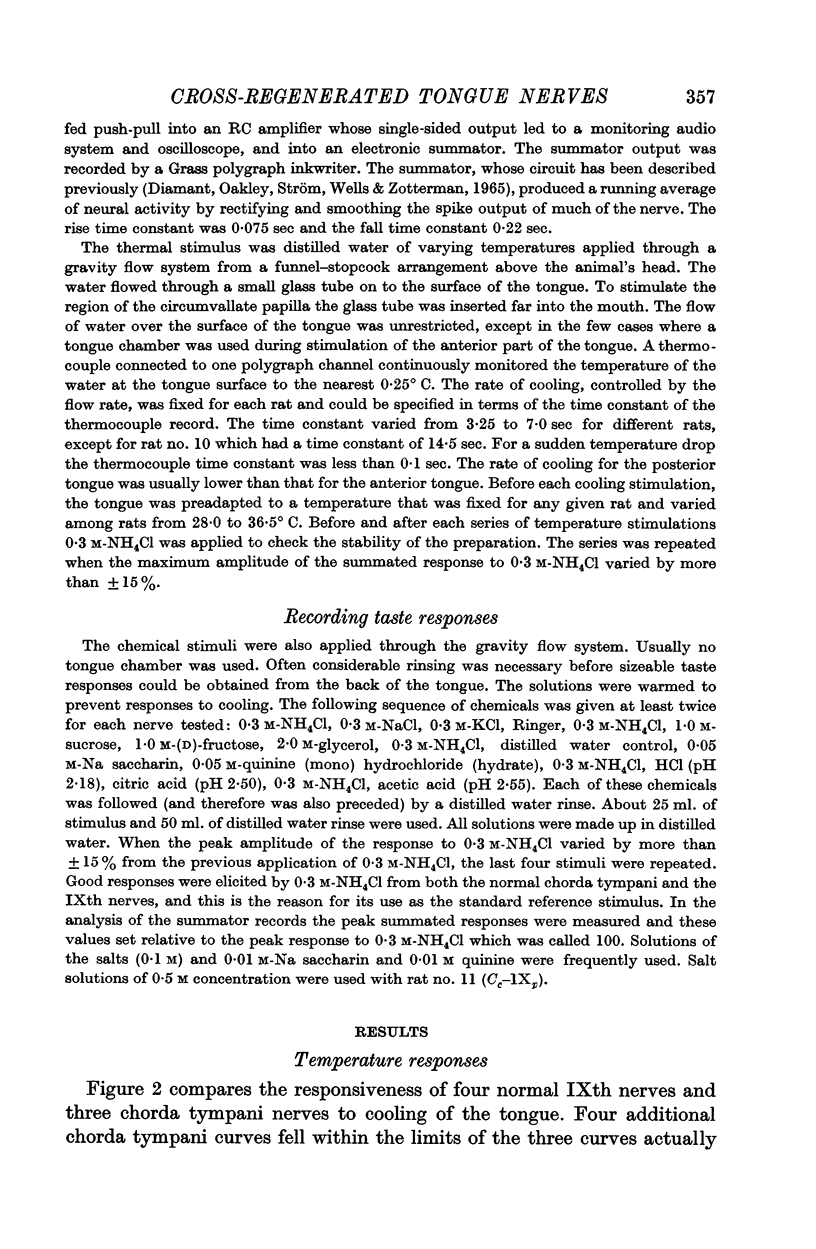
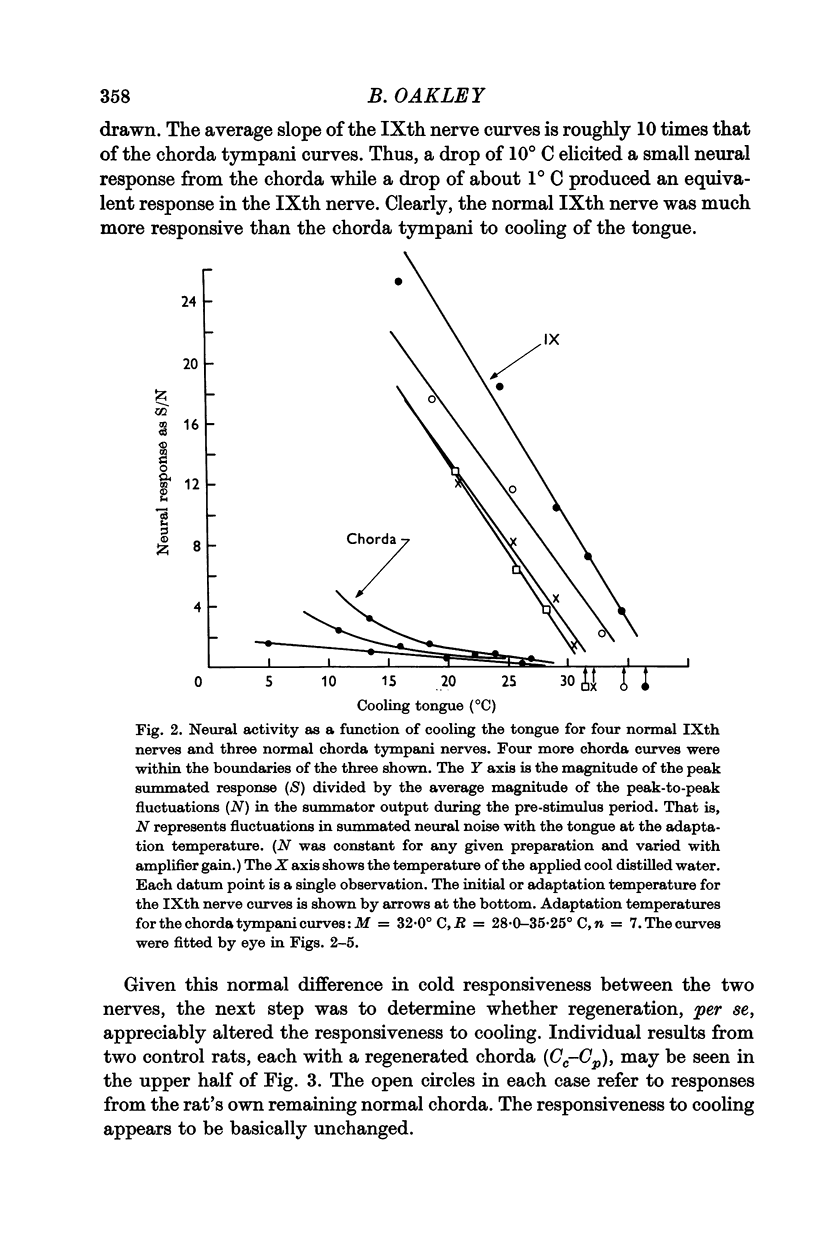
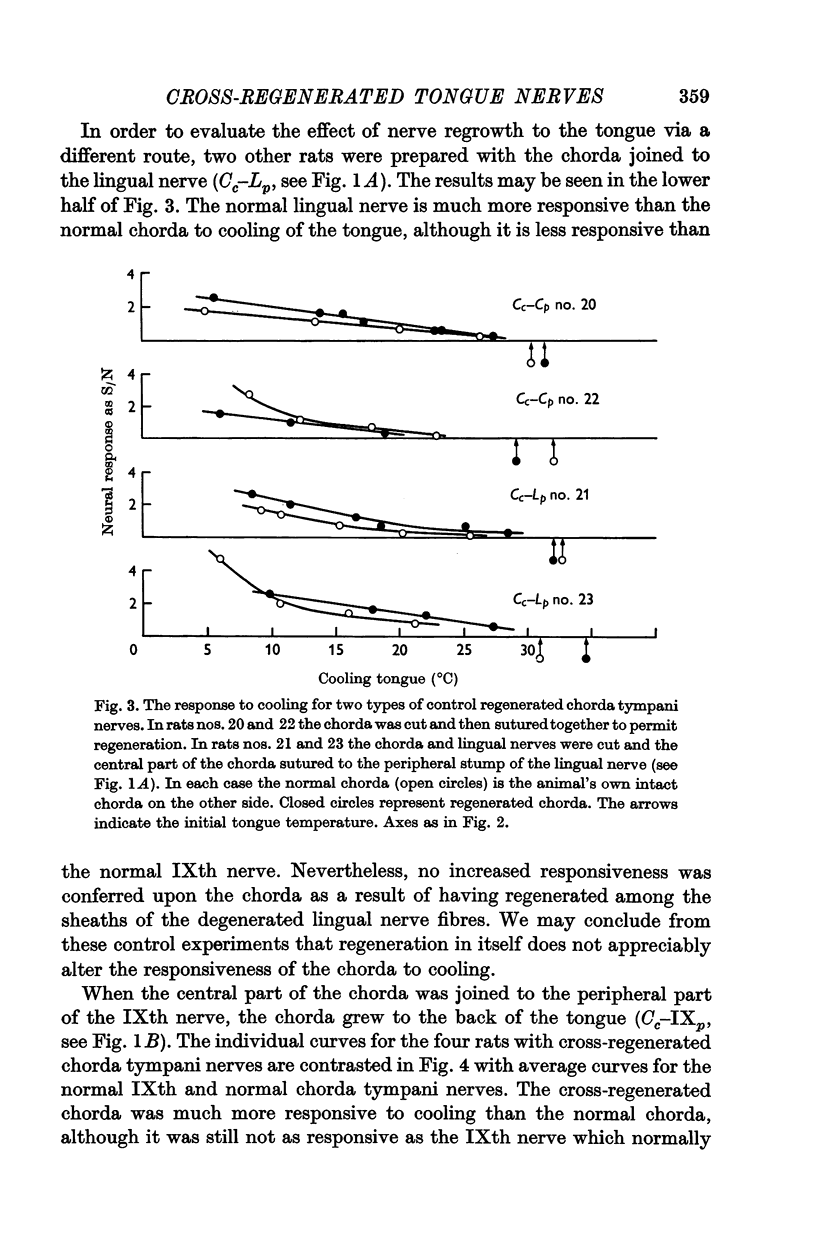

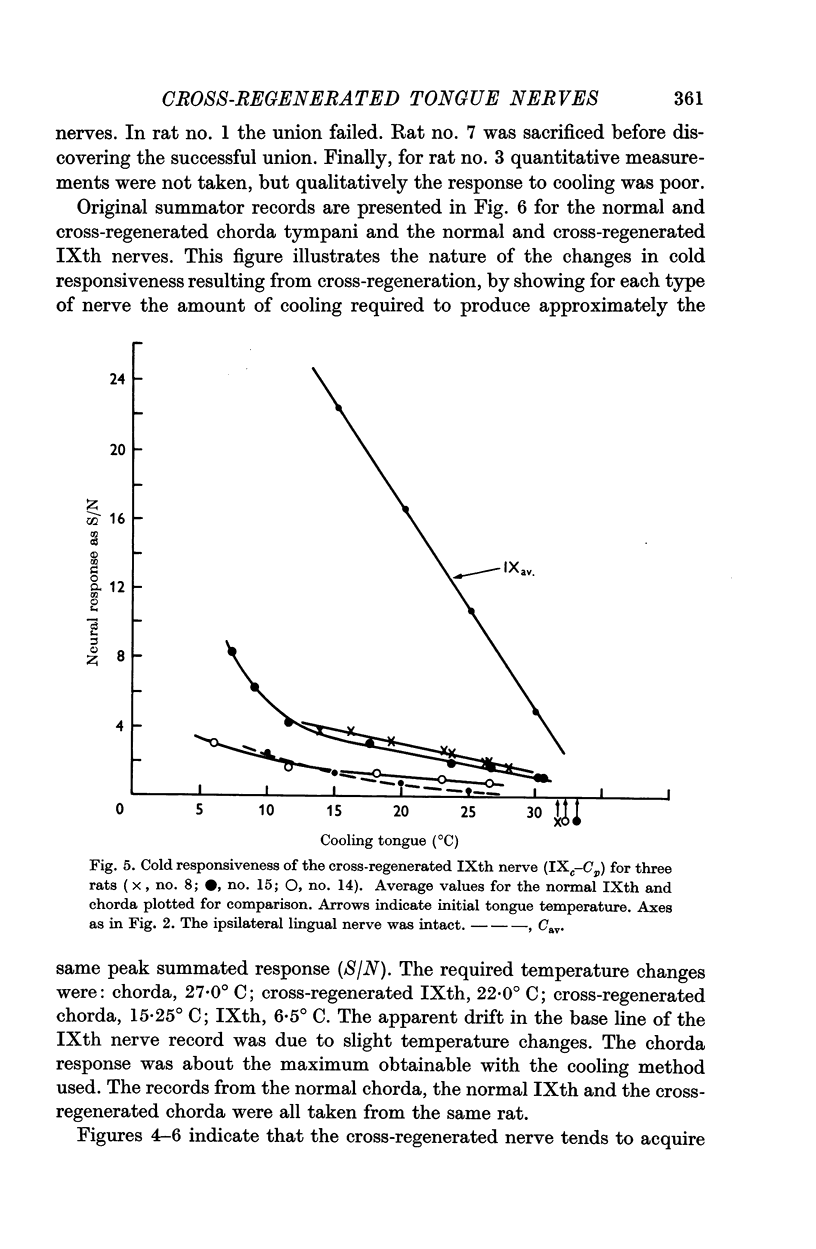
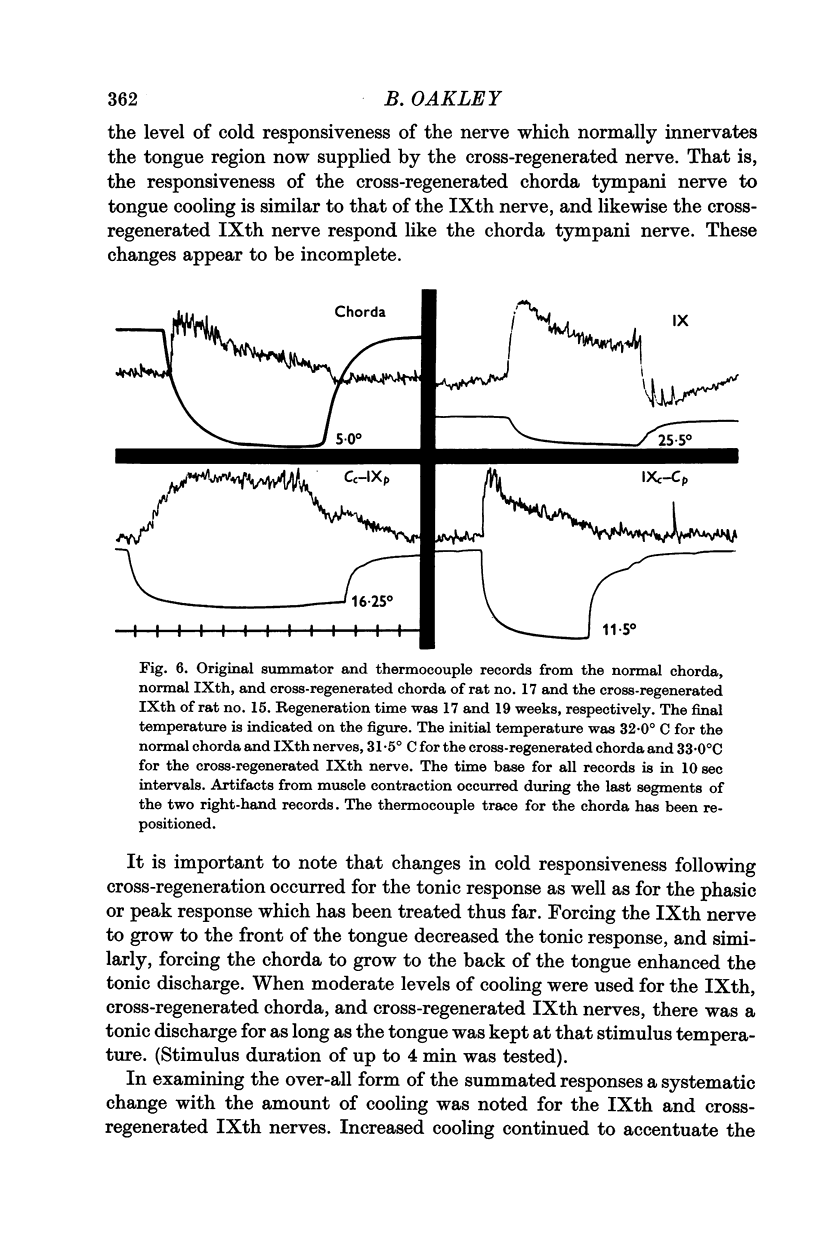
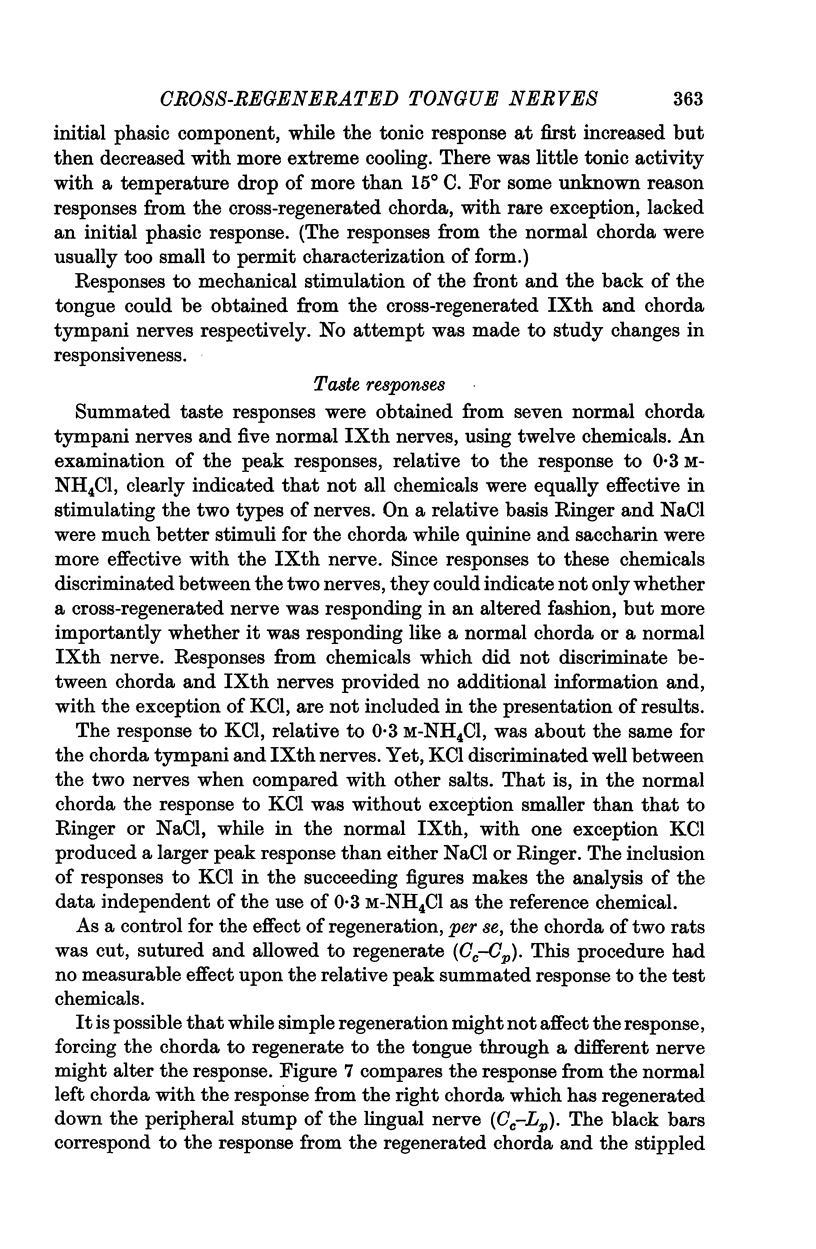







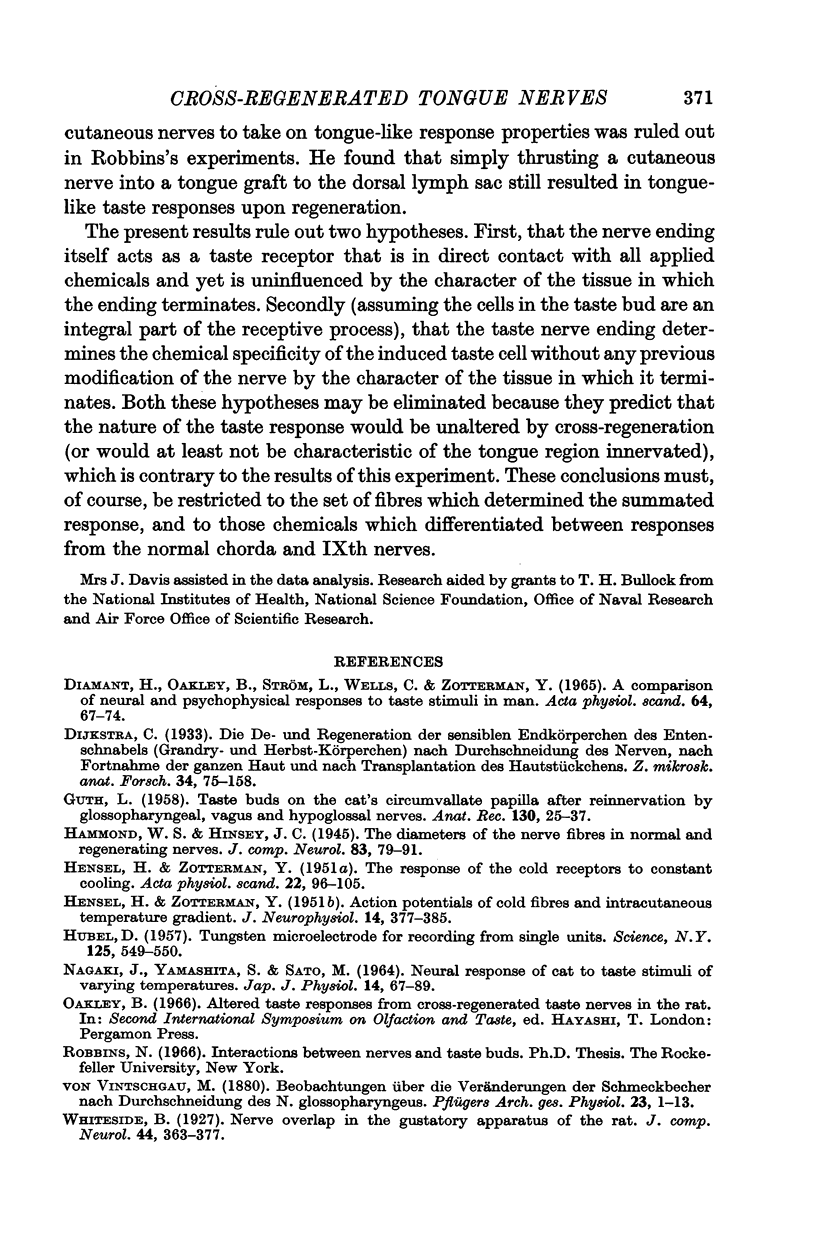
Selected References
These references are in PubMed. This may not be the complete list of references from this article.
- DIAMANT H., OAKLEY B., STROEM L., WELLS C., ZOTTERMAN Y. A COMPARISON OF NEURAL AND PSYCHOPHYSICAL RESPONSES TO TASTE STIMULI IN MAN. Acta Physiol Scand. 1965 May-Jun;64:67–74. doi: 10.1111/j.1748-1716.1965.tb04154.x. [DOI] [PubMed] [Google Scholar]
- GUTH L. Taste buds on the cat's circumvallate papilla after reinnervation by glossopharyngeal, vagus, and hypoglossal nerves. Anat Rec. 1958 Jan;130(1):25–37. doi: 10.1002/ar.1091300104. [DOI] [PubMed] [Google Scholar]
- HENSEL H., ZOTTERMAN Y. Action potentials of cold fibres and intracutaneous temperature gradient. J Neurophysiol. 1951 Sep;14(5):377–385. doi: 10.1152/jn.1951.14.5.377. [DOI] [PubMed] [Google Scholar]
- HENSEL H., ZOTTERMAN Y. The response of the cold receptors to constant cooling. Acta Physiol Scand. 1951 Apr 25;22(2-3):96–105. doi: 10.1111/j.1748-1716.1951.tb00758.x. [DOI] [PubMed] [Google Scholar]
- Hubel D. H. Tungsten Microelectrode for Recording from Single Units. Science. 1957 Mar 22;125(3247):549–550. doi: 10.1126/science.125.3247.549. [DOI] [PubMed] [Google Scholar]
- NAGAKI J., YAMASHITA S., SATO M. NEURAL RESPONSE OF CAT TO TASTE STIMULI OF VARYING TEMPERATURES. Jpn J Physiol. 1964 Feb 15;14:67–89. doi: 10.2170/jjphysiol.14.67. [DOI] [PubMed] [Google Scholar]


